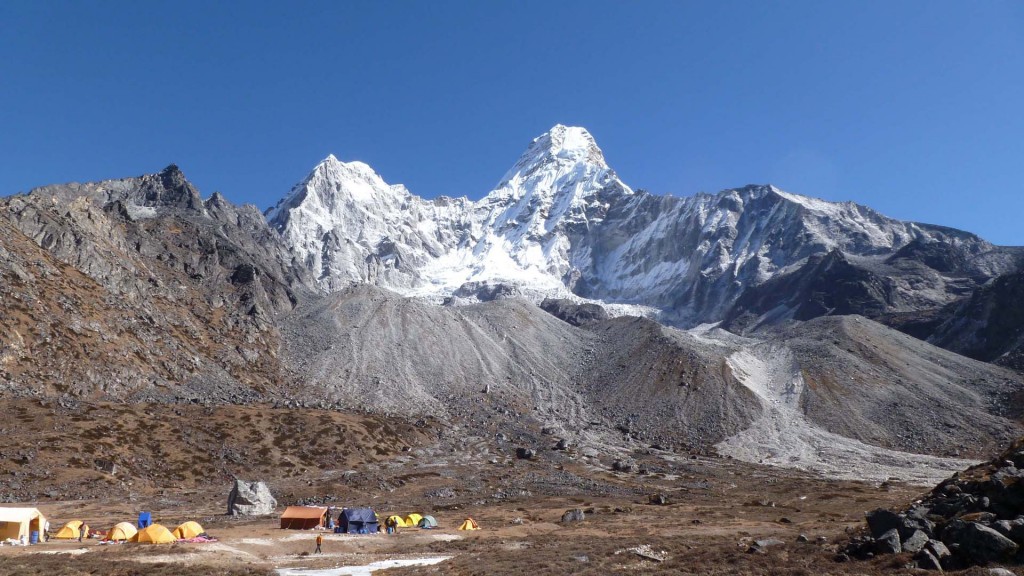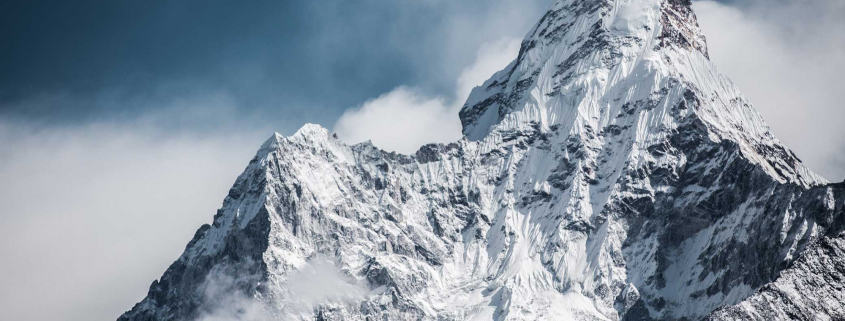Ama Dablam presents a significant climbing challenge with sustained technical sections of snow, ice, and rock at relatively high-altitude with significant exposure. Trekking through the beautiful Khumbu valley and interacting with the local Sherpa culture combine with this challenging climb to create a truly remarkable experience!
Note from Garrett Madison, Lead Guide:
I first attempted Ama Dablam in 2003 with a few of my mountain guide friends after a Cho Oyu expedition, my first season in the Himalayas. We did not reach the summit due to complications on the route. I returned in 2012, as a seasoned Himalayan guide and Expedition Leader with 3 climbers, and had an excellent climb, reaching the summit with all climbers on November 7th. It was one of the most enjoyable climbs of my career. I returned to Ama Dablam in the autumn of 2014 with a few climbers and again had a fantastic climb, and we have returned 6 times since having success on each expedition!!
Ama Dablam, or “mother’s necklace” is an iconic peak located in the Khumbu Valley of Nepal, and was first climbed in 1961. At 6812m / 22,349ft, ‘Ama’ is a challenging climb because of the steep faces of snow, ice, and rock that one must negotiate during the ascent of the Southwest Ridge. Climbers must have experience with fixed ropes, and be comfortable climbing along very exposed ridgelines. The view from the summit is spectacular, as one can see Everest, Lhotse, Makalu, Cho Oyu, and Sishapangma.
We begin our expedition by trekking from Lukla along the Dudh Kosi river through the Sherpa villages of Monjo, Namche, Debuche, then Pangbochce. From here we leave the valley and climb up to our base camp.
We have the finest base camp on the mountain. Because our camp is built on a large grassy plain, we are able to bring a large dining and communications tent, as well as personal tents that you can stand up in with a very plush mattress for sleeping. Fresh food is brought up daily from the valley so our base camp meals are truly delicious! We have a state of the art communications system that allows us to receive regular weather forecasts, make phone calls, and check-in via the internet, as well as coordinating with our climbers and Sherpas on the mountain. The views from base camp are stunning, and often we take breakfast outside in the sunshine to start the day.
Our high camps are reserved by our Sherpa team in advance of the season, as space in these camps is very limited. By reserving these camps and stocking them with provisions such as food and cooking equipment, we are fortunate in that we only have to carry our personal items with us during our acclimatization rotations and our ascent. Our Sherpa team will arrive in base camp several weeks ahead of us and begin setting the route. This is a huge advantage for us as setting the route on Ama can take weeks. By the time we arrive the route should be ready for climbing.




